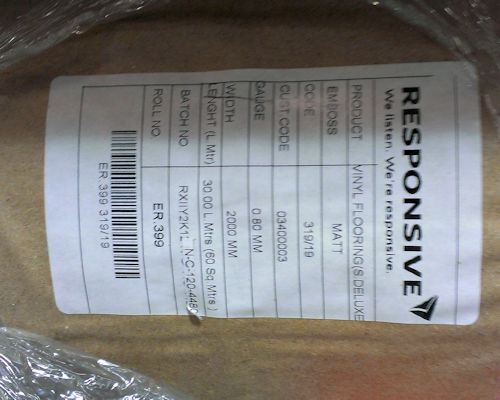On-site storage and handling
 Audio for slide 1 (mp3 |6|KB)
Audio for slide 1 (mp3 |6|KB)
When the materials are delivered to site, it's important that they're put in a safe place so they won't get damaged.
They should also be stored under conditions that will let them acclimatise to the temperature and humidity of the room they're going to be installed in.
We'll talk more about 'acclimatisation' in the next lesson.

They should also be stored under conditions that will let them acclimatise to the temperature and humidity of the room they're going to be installed in.
We'll talk more about 'acclimatisation' in the next lesson.

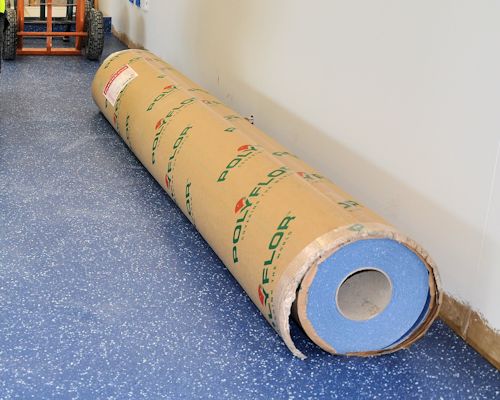 Audio for slide 2 (mp3 |6|KB)
Audio for slide 2 (mp3 |6|KB)
Rolls that are 3 metres wide or more need to be laid down flat on a smooth level surface that supports the entire length of the roll.
Make sure there are no objects under the roll that might damage the material or cause pressure marks.
Rolls that are 2 metres wide or less should be stood on end and secured so they won't fall over.
Check that the labels are turned forward so you can read the pattern numbers and dye lots easily.

Make sure there are no objects under the roll that might damage the material or cause pressure marks.
Rolls that are 2 metres wide or less should be stood on end and secured so they won't fall over.
Check that the labels are turned forward so you can read the pattern numbers and dye lots easily.

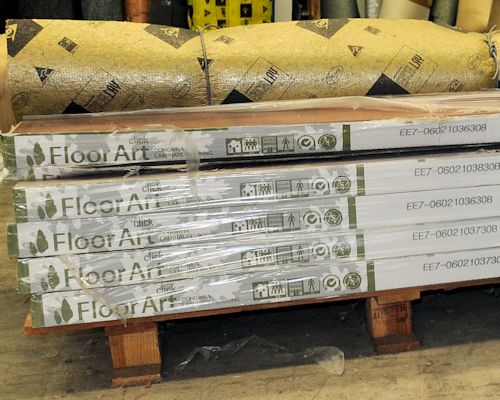 Audio for slide 3 (mp3 |6|KB)
Audio for slide 3 (mp3 |6|KB)
Cartons of tiles should also be handled carefully. Use a trolley to move them around the floor.
Only stack them as high as recommended by the manufacturer, and stack the boxes squarely one on top of another.
This will help to protect the edges of the tiles underneath from damage or curling.
Like rolls, tiles should be stored on a flat, level surface - otherwise they can distort and end up with a permanent change in their shape.

Only stack them as high as recommended by the manufacturer, and stack the boxes squarely one on top of another.
This will help to protect the edges of the tiles underneath from damage or curling.
Like rolls, tiles should be stored on a flat, level surface - otherwise they can distort and end up with a permanent change in their shape.

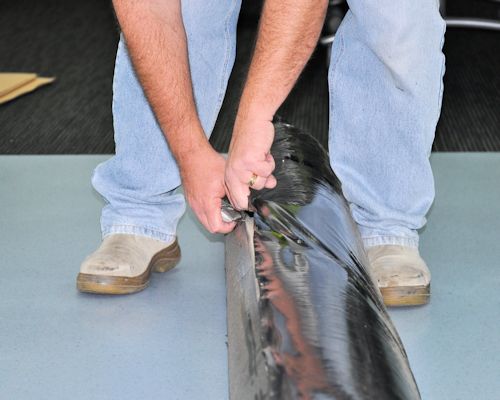 Audio for slide 4 (mp3 |6|KB)
Audio for slide 4 (mp3 |6|KB)
Opening a roll
To open a roll, insert a hook knife through the paper packing between the first lap of material and the next layer.
The hook knife will avoid damage to the surface of the material.
Clean the area thoroughly where you plan to roll out the sheet. Even a small stone or metal shaving can embed into the material.

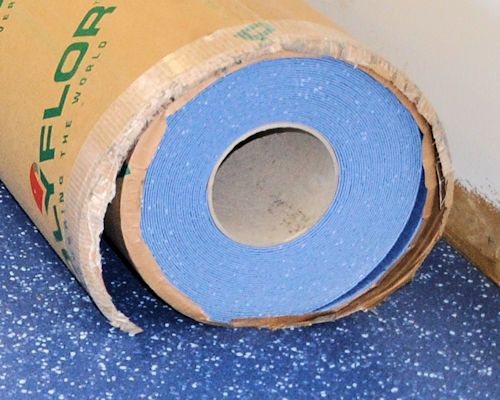 Audio for slide 7 (mp3 |6|KB)
Audio for slide 7 (mp3 |6|KB)
The circumference of a circle is the distance around the outside. To measure it, you can simply wrap your tape measure around it.
Below is an example of how the formula works. Note that at the end of the calculation we've converted the answer from millimetres to metres.
If you've forgotten how to do this with the decimal point, go to the unit Making measurements and revise the lesson: The metric system.

Below is an example of how the formula works. Note that at the end of the calculation we've converted the answer from millimetres to metres.
If you've forgotten how to do this with the decimal point, go to the unit Making measurements and revise the lesson: The metric system.

Outer circumference: 750 mm
Inner circumference: 350 mm
Number of laps: 65 laps
750 + 350 = 1100
1100 ÷ 2 = 550
550 x 65 laps = 35.75 metres
 Go to Conditioning
Go to Conditioning